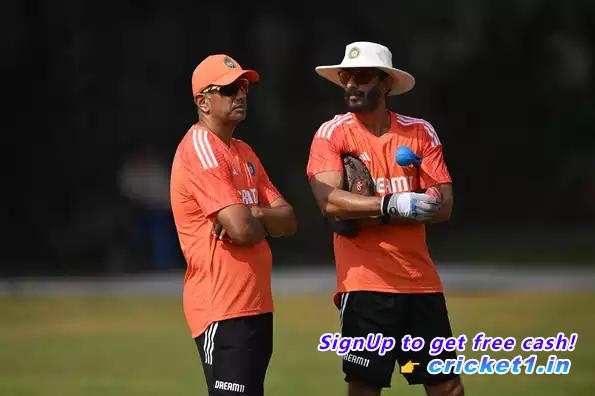
Vikram Rathour, who recently concluded his tenure as the India Men’s batting coach, has spotlighted Shubman Gill and Yashasvi Jaiswal as the linchpins of India’s batting unit in the not-too-distant future. With Rohit Sharma and Virat Kohli stepping away from the T20 International (T20I) scene, this dynamic duo was instrumental with key performances in a recently-concluded series against Zimbabwe, indicating a promising trajectory. India clinched that series 4-1, despite fielding what was largely a second-string side—with a few notable exceptions from the T20 World Cup squad.
As India embarks on a transitional phase post the retirements of cricketing stalwarts Rohit Sharma, Virat Kohli, and Ravindra Jadeja, Rathour is optimistic about the new generation rising to the occasion. However, Rathour emphasized the necessity of meticulously managing this transition. “It is never going to be easy to replace people of Rohit and Virat’s calibre,” Rathour told PTI. “The recently-concluded [T20I] series against Zimbabwe gave us some glimpse into how the T20 team will look like in future. But we still have a few years in Test and ODI cricket to get to that point.”
Rathour further elaborated, “I won’t be too concerned about it [the transition]. We have a lot of depth in Indian cricket. There are lots of very talented and skilful players who are coming through the system. The only thing we need to make sure is the transition is done in a controlled manner. It needs to be gradual.”
He expressed confidence that the next wave of players such as Shubman Gill, Rishabh Pant, Yashasvi Jaiswal, and Dhruv Jurel would establish themselves firmly, making the transition smoother. “In ODIs also, we have experienced players like Shreyas Iyer, KL Rahul, and Hardik Pandya to take over. There are many exciting players coming through, but these two [Gill and Jaiswal] are equipped to play all three formats for a long time. They are going to be the backbone of Indian batting in years to come.”
Lavishing particular praise on Rinku Singh, who narrowly missed out on a spot in the Indian team for the 2024 T20 World Cup despite proving his credentials on the international stage over the past year, Rathour did not hold back. Since making his debut in August last year, Rinku has played 23 T20Is, averaging an impressive 83.2 with a strike rate of 176.
.27. His escalation to the international ranks followed stellar performances in the 2023 IPL season.
However, Rathour was keen to highlight that Rinku’s prowess extends beyond limited-overs cricket. In 47 first-class matches, Rinku averages a solid 54.7, and he has been equally destructive in List A cricket, averaging 48.69 with a strike rate of 94.80. “When I see him bat in nets, I can’t find any technical reasons why Rinku cannot be a successful Test batter,” Rathour remarked. “I understand he has made his name as a terrific finisher in T20 cricket but if you look at his first-class record, he is averaging in high 50s. He is also blessed with a very calm temperament. So all these factors indicate that if given an opportunity, he can develop into a Test cricketer.”
Rathour also had glowing words for the relationship he shared with Rahul Dravid, India’s head coach, calling him the best coach he has ever worked under. Rathour commended Dravid for his ability to bring about a significant change in India’s T20 World Cup fortunes. “Rahul is the best coach that I have worked with, who gives you lots of space to work, is open to suggestions and will provide you an honest feedback,” he said. “One of the first discussions we had was about changing the batting template in T20 cricket. We agreed that we needed to bring in more intent and aggression in our batting approach.”
He illustrated this point by mentioning the strategic inclusion of Axar Patel and Ravindra Jadeja in the playing XI, which added significant depth to India’s batting lineup. “That made a massive difference and gave the batters in top order lot more freedom to bat,” Rathour concluded.
As India charts its future course, the emphasis on nurturing young talent appears to be the bedrock of their strategy. With promising stars on the horizon, the transition, though challenging, holds the potential for a smooth and seamless evolution in Indian cricket’s batting landscape.

